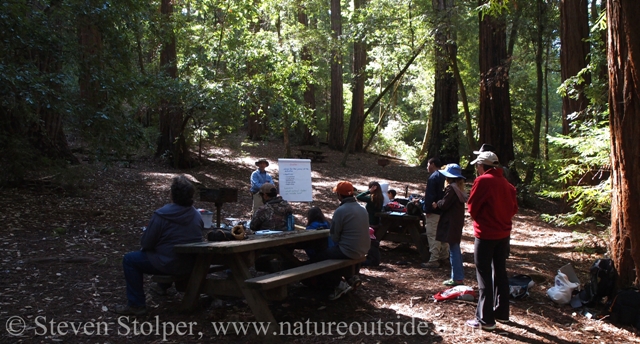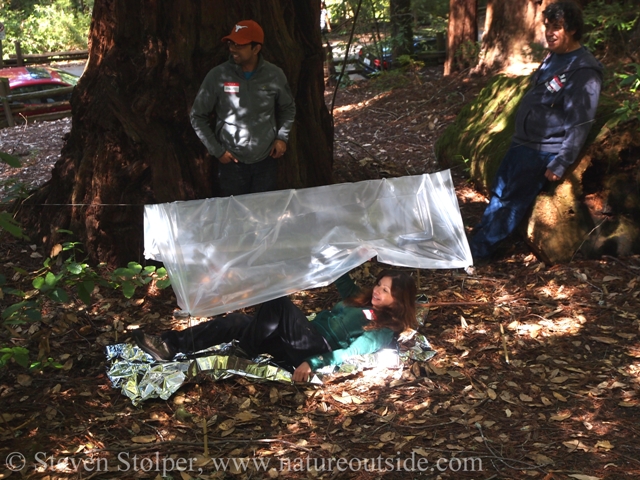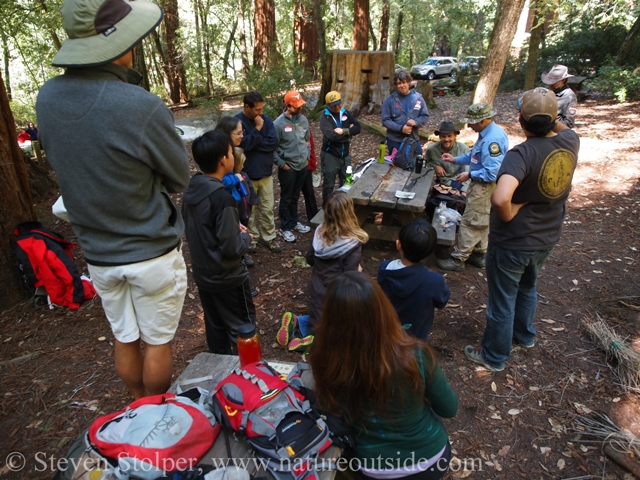Hi Everyone!
I think many of us agree that if you go into the backcountry, you need the skills to handle wilderness emergencies.
If you are lost in the wilderness of one of the lower 48 United States, you can expect a search-and-rescue team to find you within 72 hours of when they start looking (statistically). So modern wilderness survival training is geared to give you the skills to weather a short-term (1 to 3 days) survival situation.
I give wilderness survival classes for visitors to my local state park. I thought people might be interested in seeing some pictures that a student took from a recent class. The pictures are a little embarrassing for me because there are no shots of the students working! That is because the student was too busy to take any pictures.
A beautiful location always helps!

The chance to experiment (and make mistakes in class) is very important. Here are some students constructing this shelter configuration for the first time. They are making several mistakes, but that's OK! It is what the class is all about.

Here we are experimenting with a variety of natural and artificial tinders (including field-expedients). We use several methods of ignition and evaluate the results.

This is an introductory class and a common question I get is, "How can I choose a good survival class?" I hear the question often enough that I wrote down the advice I usually give and put it online for anyone to access.
I thought forum members might appreciate knowing about it and could provide feedback if I missed something important. Please let me know what you think. (link)
Regards,
- Woodsorrel
I think many of us agree that if you go into the backcountry, you need the skills to handle wilderness emergencies.
If you are lost in the wilderness of one of the lower 48 United States, you can expect a search-and-rescue team to find you within 72 hours of when they start looking (statistically). So modern wilderness survival training is geared to give you the skills to weather a short-term (1 to 3 days) survival situation.
I give wilderness survival classes for visitors to my local state park. I thought people might be interested in seeing some pictures that a student took from a recent class. The pictures are a little embarrassing for me because there are no shots of the students working! That is because the student was too busy to take any pictures.
A beautiful location always helps!

The chance to experiment (and make mistakes in class) is very important. Here are some students constructing this shelter configuration for the first time. They are making several mistakes, but that's OK! It is what the class is all about.

Here we are experimenting with a variety of natural and artificial tinders (including field-expedients). We use several methods of ignition and evaluate the results.

This is an introductory class and a common question I get is, "How can I choose a good survival class?" I hear the question often enough that I wrote down the advice I usually give and put it online for anyone to access.
I thought forum members might appreciate knowing about it and could provide feedback if I missed something important. Please let me know what you think. (link)
Regards,
- Woodsorrel
